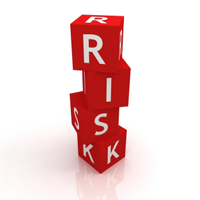

- Credit 101
- Teaching Tools
- Scores
- Life Stages
- Credit Mishaps
- Understanding Different Bankruptcy Chapters
- Your Credit Report After a Bankruptcy
- Understanding Judgments
- Inaccuracies on Your Credit Report
- Disputing Credit Report Errors
- Understanding Foreclosure
- The Foreclosure Process & What To Do Afterwards
- Understanding Identity Theft
- In the event of: The Death of a Spouse
- Rebuilding Your Credit
- Choosing a Reputable Credit Counselor
- Avoid the Downside of Credit Mismanagement
- What is a Credit Freeze
- Worksheets & Letters
- 6 Steps to Creating a Budget
- Household Budget: Wants vs Needs
- Personal Budget Template
- Understanding Amortization Schedules
- Loan Amortization Calculator
- Sample Opt-Out Letter
- Sample Dispute Letter
- Annual Credit Report Request Form
- Auto Loan Payment Calculator
- Back-to-School Budgeting
- Cost of Credit
- Emergency Fund
- How Much Car Can You Afford
- How Much House Can You Afford
- How Much Will College Cost
- How Much Will My Loan Cost
- How Will My Savings Grow
- Mortgage Payment
- Mortgage Refinancing
- Pay Down Debt or Invest
- Repaying Student Loans
- Retirement Fund
- Rework Your Budget
- Saving for a Goal
- Should I Consolidate My Debt
- Travel Budgeting
- Your Holiday Budget
- Buying a House
- 5 Steps to Buying a Home
- 5 C's of credit When Applying for a Loan
- What Score is Needed to Purchase a Home
- Using a Realtor
- Understanding Fixed Rate Mortgages
- Understanding FHA Loans
- Understanding VA Loans
- Understanding Interest Only Loans
- Understanding ARM Loans
- Understanding Combo Loans
- Understanding Streamline K Loans
- Understanding Bridge Loans
- Understanding HELOC (Home Equity Line of Credit)
- Understanding Reverse Mortgages
- Basic Mortgage Underwriting Principles
- Credit & Financial Law
- Home


Risk Scores
While FICO scores are the most commonly used credit risk scores in the US, lenders may use other scores to evaluate your credit risk. These include:
■ Application risk scores.
Many lenders use scoring systems that include the FICO score but also consider information from your credit application.
■ Customer risk scores.
A lender may use these scores to make credit decisions on its current customers. Also called “behavior scores,” these scores generally consider the FICO score along with information on how you have paid that lender in the past.
■ Other credit scores.
These scores may evaluate your credit report differently than FICO scores, and in some cases a higher score may mean more risk, not less risk as with FICO scores. When purchasing a credit score for yourself, most experts recommend getting the FICO score, as this is the score most lenders use when making credit decisions.
YOU HAVE THREE FICO SCORES
In general, when people talk about “your score,” they’re talking about your current FICO score. But in fact there are three different FICO scores developed by Fair Isaac—one at each of the three main US credit reporting agencies. And these scores have different names.
Credit Reporting Agency FICO Score Name
TransUnion Fico Risk Score/Classic
Equifax Beacon
Experian Experian/Fair Isaac Risk Model
WILL YOUR SCORES BE DIFFERENT?
FICO scores range from 300 to 850. Fair Isaac makes the scores as consistent as possible between the three credit reporting agencies. Each of the three credit reporting agencies probably has different information about you, and that means your scores will also be different. If your information is identical at all three credit reporting agencies, your FICO scores should be pretty close. Since lenders may review your score and credit report from any of the three credit reporting agencies, it’s a good idea to check your credit report from all three and make sure they’re all accurate.
How Fico Scores Work.
FICO scores are the best-known and most widely used credit scores. Most credit scores used in the US and Canada are produced from software developed by Fair Isaac Corporation. FICO scores are provided to lenders by the three major credit reporting agencies: Equifax, Experian and TransUnion.
When lenders order your credit report, they can also buy a FICO score that is based on the information in the report. That FICO score is calculated by a mathematical equation that evaluates many types of information from your credit report at that agency. By comparing this information to the patterns in hundreds of thousands of past credit reports, the FICO score estimates your level of future credit risk.
In order for a FICO score to be calculated on your credit report, the report must contain enough information—and enough recent information—on which to base a score. Generally, that means you must have at least one account that has been open for six months or longer, and at least one account that has been reported to the credit reporting agency within the last six months.
FICO scores provide a reliable guide to future risk based solely on credit report data. FICO scores have a 300–850 score range. The higher the score, the lower the risk. But no score says whether a specific individual will be a “good” or “bad” customer. And while many lenders use FICO scores to help them make lending decisions, each lender has its own strategy, including the level of risk it finds acceptable for a given credit product. There is no single “cutoff score” used by all lenders.
